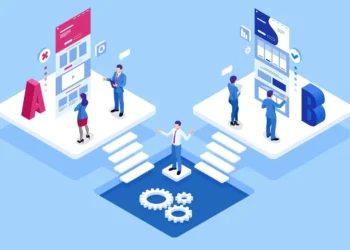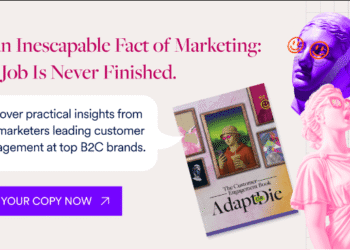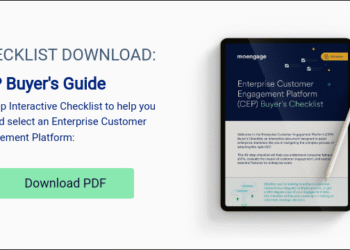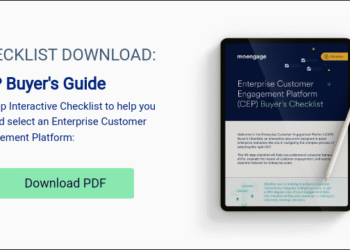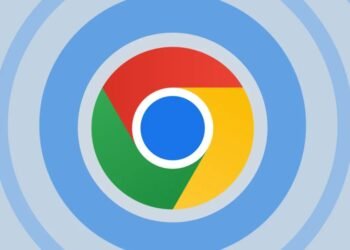In 2025, we’re witnessing a creative renaissance in mobile advertising. While programmatic used to be all about algorithms, bidding, and targeting precision, today’s edge lies somewhere more emotional, in the creative itself. And not just any creative: the kind that’s fast, flexible, and emotionally intelligent.
A recent joint report by AppsFlyer, Meta, and Dentsu confirms what performance marketers have long suspected: the most successful campaigns are no longer just those with the highest budgets or best targeting, they’re the ones that consistently deliver the right message, to the right audience, on the right channel, at the right moment.
But how do you achieve that? With creative optimization.
1. Why Creative Is Now the Performance Lever
AI has solved one of the industry’s oldest problems: speed and scale in production. With generative tools, mobile marketers can now spin out hundreds of ad variants almost instantly. In fact, the top gaming apps producing over $7M per quarter now average 2,743 creative variations per quarter, and non-gaming apps aren’t far behind, growing their output 18% YoY with an average of 2,365 creatives.
But this arms race isn’t just about quantity anymore…
The true bottleneck has shifted from production to measurement and iteration. Creative teams are no longer asking “Can we produce fast enough?” but rather “Can we understand fast enough what works and why?”
Modern creative optimization isn’t just about testing colors or CTAs. It’s about decoding hooks, motivations, and narratives that drive both installs (IPM) and long-term engagement (Day 7 retention).
2. Why Volume and Variety Still Matter (But in Smarter Ways)
Despite all the tech, one constant remains: a small number of creatives still dominate spend. In gaming, the top 2% of creatives receive 53% of spend. But in non-gaming, the same slice commands just 43%, indicating broader diversification and fatigue management.
Why does this matter?
Because diversifying creatives isn’t just a nice-to-have, it’s becoming a competitive necessity. Creative fatigue sets in faster than ever. In a world where everyone’s scrolling, skipping, and swiping, you can’t afford to bank on a single hero video for long.
And platforms behave differently. Social and search channels reward variety and emotional nuance, while ad networks favor aggressive optimization on proven winners. So whether you’re launching a hypercasual game or a finance app, variety isn’t optional, it’s foundational.

3. Creative That Converts: Gaming vs. Non-Gaming Motivations
🎮 Gaming: It’s Not Just Gameplay Anymore
- Casual Games: “Pure Failure” endings. Think failing dramatically in a puzzle or level. These deliver 65% higher IPM on social/search than “Pure Success.” Yet most of the budget still goes to success-driven outcomes.
- Hypercasual: The Challenge motivation excels at retention. On ad networks, creatives driven by Challenge show 2.2x higher Day 7 retention than those led by Excitement (13% vs. 6%).
- Midcore: “Community” and “Competition” themes are severely underused (just 8% share), but they deliver the highest Day 7 retention at 24.5%, especially for strategy and RPG genres.
- Social Casino: Completion wins, but storytelling lags. Creatives always end in jackpots, zero failure-based narratives exist. There’s untapped potential in mixing success with suspense.
📱 Non-Gaming: Practical, Personal, and Emotional Wins
- Finance: Tutorials beat testimonials in retention by 37%. UGC that explains “how to use” outperforms “why I love it.”
- Dating: Serious relationship seekers deliver 15% better Day 7 retention than casual daters, yet most budgets still favor swipe-for-fun themes.
- Social Media: Storytelling hooks, while underutilized (just 6% of spend), generate the highest retention (8.4%). Emotional arcs > flashy filters.
- Photo & Video (GenAI apps): User POV hooks are sticky. Think: “Here’s how I edited my video in 5 seconds.” While not always top for IPM, they create long-term users.
The takeaway? Whether you’re designing a dating ad or a midcore game spot, the emotional context matters just as much as the format.
4. What Wins on DSPs vs. Social vs. Ad Networks
Creative success depends not just on what you show, but where you show it.
- DSPs: Great for longer retention arcs. For instance, Finance creatives with Instant Gratification hooks perform 17% better on Day 7 on DSPs vs. Social.
- Social & Search: These platforms reward emotional storytelling and humor. For example, Humorous Skits outperform Immediate Gameplay by 12–15 points in IPM, but receive modest spend.
- Ad Networks: A high-IPM battlefield. Here, you’ll see Gameplay Reviews driving 88% higher IPM than testimonials, but testimonials win on retention.
Celebrity impact varies, too:
- TV personalities and social influencers > movie stars in both IPM and retention.
- Music artists deliver 50% higher Day 7 retention than movie stars yet attract <10% of budget.
- Supporting roles or brief appearances drive 4x the IPM of main roles on ad networks.
Creative teams must design with these differences in mind. One-size-fits-all doesn’t cut it anymore.
5. How AI Is Affecting Creative Optimization
AI is doing more than accelerating production. It’s helping marketers:
- Analyze millions of creatives to spot patterns in hooks, formats, and motivations
- Test emotional tones across channels and segments
- Scale UGC variants faster by repurposing and localizing
- Build predictive models to forecast creative fatigue and auto-refresh
With AI, marketers can now optimize at the emotional layer, not just the executional one.
6. What App Marketers Should Do in 2025
✅ Stop chasing IPM alone
High install rates mean nothing if users churn by Day 2. Balance your creative mix for both short-term and long-term outcomes, especially in subscription and in-app monetization models.
✅ Build for platform, not just for brand
A testimonial that works on TikTok might flop on DSPs. Adapt hooks, formats, and celebrity roles by channel.
✅ Mix motivations and test relentlessly
A “Challenge” video might drive installs. A “Community” narrative might keep them. Use both. Then test UGC formats: testimonials, reviews, tutorials, POVs.
✅ Let AI do the heavy lifting
From pretesting concepts to auto-swapping fatigued creatives, AI gives your team speed and feedback loops it could never achieve manually.
How AppSamurai DSP Helps You Scale Smarter
At AppSamurai, we’ve built our DSP to support this new creative reality. Our platform is designed to help app marketers go beyond just media buying, and actually grow smarter through creative optimization.
Here’s how:
- Multi-format support: Run video, native, and more ads across top channels and supply sources.
- Creative fatigue monitoring: Get insights on when performance is dropping, and when to refresh.
- Built-in A/B testing: Compare variations across audiences and platforms with real-time feedback.
Want to see how leading apps are winning?
Check out AppSamurai DSP case studies to see how creative optimization drives real results across verticals:



